-
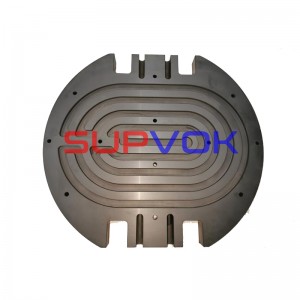
Silicon carbide base
High precision components for semiconductor process and optical mechanical equipment
The SSiC silicon carbide manipulator and chassis are formed by isostatic pressing process and sintered in a vacuum sintering furnace at high temperature. The overall dimensions, thickness dimensions and shapes can be finished according to the requirements of the user’s design drawings to meet the specific use requirements of the user.
-
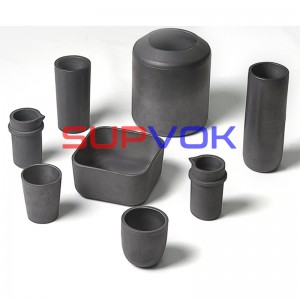
SiC ceramic crucible and sagger
The SSiC crucible and saggers are made of nano SiC material by isostatic pressing and sintering in a pressureless vacuum sintering furnace. SiC crucible sagger can be used to make round and square crucibles, flat bottoms, semi flat bottoms and spherical bottoms, and can also be added with flanges, drilling holes and other structures.
-
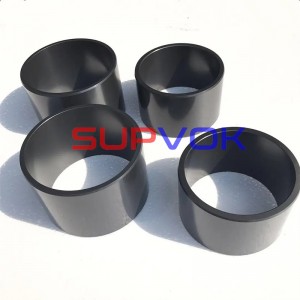
Silicon carbide wear resistant parts
The SSiC sintered silicon carbide shaft sleeve/liner is more wear-resistant, high-temperature resistant and corrosion resistant than the reaction sintered silicon carbide liner. The working environment can reach up to 1650 ℃. It can be used in petroleum, chemical industry, automobile, military industry, paper making, food, pharmacy, nuclear industry and other industries.
The nano silicon carbide produced by special process has the characteristics of high purity, small particle size distribution range, high specific surface area, stable chemical performance, high thermal conductivity (165W/MK), small thermal expansion coefficient and high hardness.
-
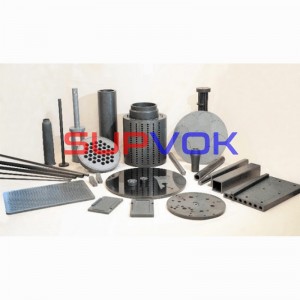
SSiC products
We have a complete set of domestic advanced production lines for dry pressure molding, isostatic pressure molding, grouting molding and extrusion molding. Its main Sintered Silicon Carbide Ceramic (SSiC) products reach high purity (≥ 98%) and high density (≥ 3.10g/cm3) without free silicon, meeting or even superior to international technical standards. KSINO has superior pressureless injection molding silicon carbide ceramic process. Thus, KSINO is one of enterprises with industrialized and mass production in China.
-
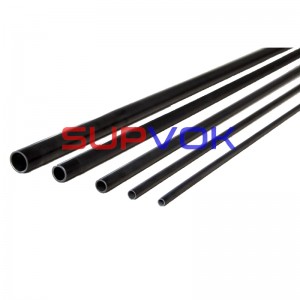
SSiC tube
Silicon carbide tubes, pipes and rollers can be widely used in high-temperature corrosion and other environments, and are indispensable components for special high-temperature kilns, heat exchangers, etc
-
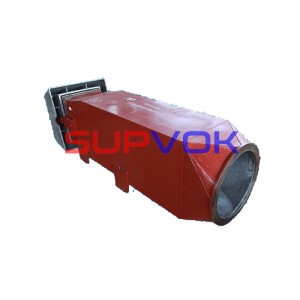
Silicon carbide lined pipes and burner
Type of structure
The composite pipe of SiC lings and steel castings can be formed with steel casting and SiC linings. According to actual needs, the lining can be made of silicon carbide ceramics produced by different processes such as clay bonding, silicon oxide bonding and others. Special adhesive shall be filled between SiC lining and steel pipe.KSINO can produce all kinds of composite pipes of SiC linings and steel castings, such as straight composite pipes, elbows, tees, crosses, reducers and other special-shaped fittings.
-
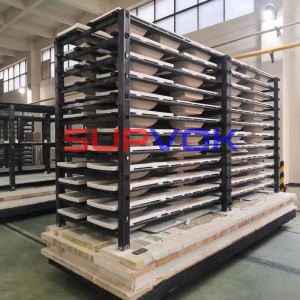
Silicon carbide kiln furniture
SiC kiln furniture, square beam, roller, plate, burner, crucible, sagger, etc.
KSINO’s products have been widely used in ceramics, kilns, mines, lithium batteries, metallurgy, petroleum, chemical industry, machinery manufacturing, electromechanical and other fields.
At present, KSINO’s main products are silicon carbide tubes, square beams, carbonized brick rings, burner burner sleeves, combustion chambers, radiation tubes, saggers, crucibles, FGD nozzles for desulfurization, and various corrosion resistant and wear-resistant profiled parts.
-
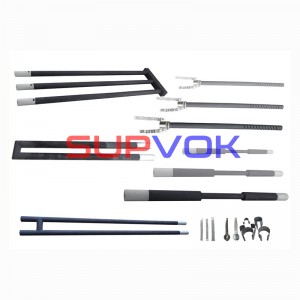
Silicon Carbide element — Silicocarbon rod
SUPVOK Silicon Carbide element is a bar or tube shaped non-metallic high-temperature electric heating element which is made of high-purity green hexagonal silicon carbide as the main raw material, processed into billets according to a certain material ratio, and then subjected to high-temperature silicification and recrystallization and finally sintered at 2200 ℃. Normal use temperature in oxidizing atmosphere can reach 1450 ℃. In continuous use, its service life can reach 2000 hours.
-

RSiC Plates
Recrystallized silicon carbide (RSiC) is made of high-purity and ultra-fine silicon carbide. Under the protection of 2400 ℃ high temperature and certain pressure atmosphere, silicon carbide will undergo evaporation condensation recrystallization. In this situation, the sintering body will be formed by intergrowth of particles at the contact of particles. It basically does not shrink. However, it has a certain number of pores.
-
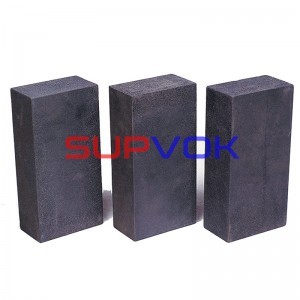
RSiC kiln furniture
Recrystallized silicon carbide (RSiC) is made of high-purity and ultra-fine silicon carbide. Under the protection of 2400 ℃ high temperature and certain pressure atmosphere, silicon carbide will undergo evaporation condensation recrystallization. In this situation, the sintering body will be formed by intergrowth of particles at the contact of particles. It basically does not shrink. However, it has a certain number of pores.
-
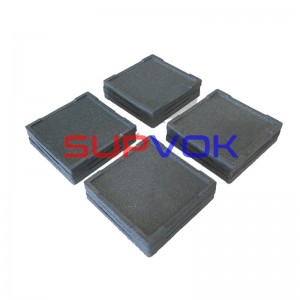
RSiC crucible and saggers
Recrystallized silicon carbide (RSiC) is made of high-purity and ultra-fine silicon carbide. Under the protection of 2400 ℃ high temperature and certain pressure atmosphere, silicon carbide will undergo evaporation condensation recrystallization. In this situation, the sintering body will be formed by intergrowth of particles at the contact of particles. It basically does not shrink. However, it has a certain number of pores.
-
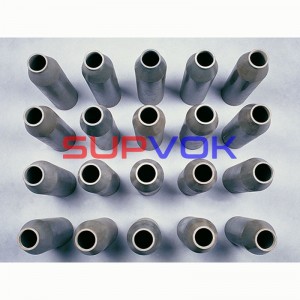
RSiC Buner Nozzles and Radiant Tube
Recrystallized silicon carbide (RSiC) is made of high-purity and ultra-fine silicon carbide. Under the protection of 2400 ℃ high temperature and certain pressure atmosphere, silicon carbide will undergo evaporation condensation recrystallization. In this situation, the sintering body will be formed by intergrowth of particles at the contact of particles. It basically does not shrink. However, it has a certain number of pores.




